Aditya Sriram
Forming Local Intersections of Projections for Classifying and Searching Histopathology Images
Aug 08, 2020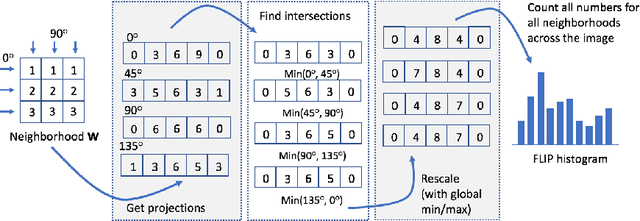
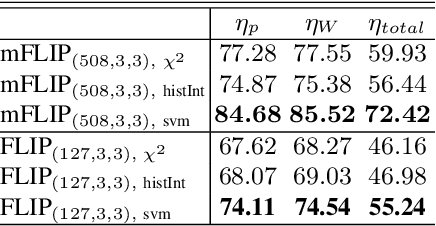
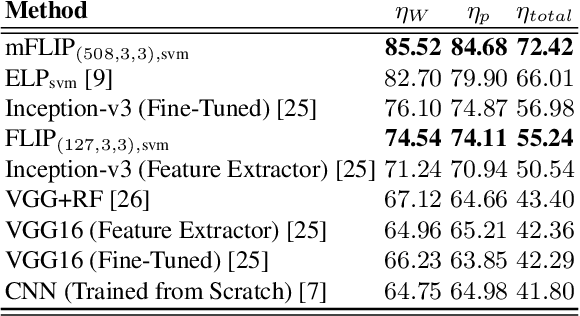
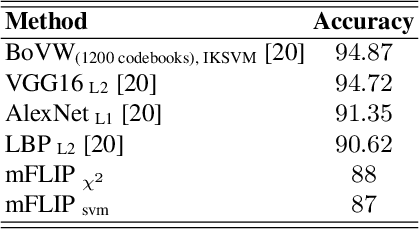
Abstract:In this paper, we propose a novel image descriptor called Forming Local Intersections of Projections (FLIP) and its multi-resolution version (mFLIP) for representing histopathology images. The descriptor is based on the Radon transform wherein we apply parallel projections in small local neighborhoods of gray-level images. Using equidistant projection directions in each window, we extract unique and invariant characteristics of the neighborhood by taking the intersection of adjacent projections. Thereafter, we construct a histogram for each image, which we call the FLIP histogram. Various resolutions provide different FLIP histograms which are then concatenated to form the mFLIP descriptor. Our experiments included training common networks from scratch and fine-tuning pre-trained networks to benchmark our proposed descriptor. Experiments are conducted on the publicly available dataset KIMIA Path24 and KIMIA Path960. For both of these datasets, FLIP and mFLIP descriptors show promising results in all experiments.Using KIMIA Path24 data, FLIP outperformed non-fine-tuned Inception-v3 and fine-tuned VGG16 and mFLIP outperformed fine-tuned Inception-v3 in feature extracting.
Projectron -- A Shallow and Interpretable Network for Classifying Medical Images
Mar 15, 2019



Abstract:This paper introduces the `Projectron' as a new neural network architecture that uses Radon projections to both classify and represent medical images. The motivation is to build shallow networks which are more interpretable in the medical imaging domain. Radon transform is an established technique that can reconstruct images from parallel projections. The Projectron first applies global Radon transform to each image using equidistant angles and then feeds these transformations for encoding to a single layer of neurons followed by a layer of suitable kernels to facilitate a linear separation of projections. Finally, the Projectron provides the output of the encoding as an input to two more layers for final classification. We validate the Projectron on five publicly available datasets, a general dataset (namely MNIST) and four medical datasets (namely Emphysema, IDC, IRMA, and Pneumonia). The results are encouraging as we compared the Projectron's performance against MLPs with raw images and Radon projections as inputs, respectively. Experiments clearly demonstrate the potential of the proposed Projectron for representing/classifying medical images.
Learning Autoencoded Radon Projections
Sep 27, 2017



Abstract:Autoencoders have been recently used for encoding medical images. In this study, we design and validate a new framework for retrieving medical images by classifying Radon projections, compressed in the deepest layer of an autoencoder. As the autoencoder reduces the dimensionality, a multilayer perceptron (MLP) can be employed to classify the images. The integration of MLP promotes a rather shallow learning architecture which makes the training faster. We conducted a comparative study to examine the capabilities of autoencoders for different inputs such as raw images, Histogram of Oriented Gradients (HOG) and normalized Radon projections. Our framework is benchmarked on IRMA dataset containing $14,410$ x-ray images distributed across $57$ different classes. Experiments show an IRMA error of $313$ (equivalent to $\approx 82\%$ accuracy) outperforming state-of-the-art works on retrieval from IRMA dataset using autoencoders.
Classification and Retrieval of Digital Pathology Scans: A New Dataset
May 22, 2017
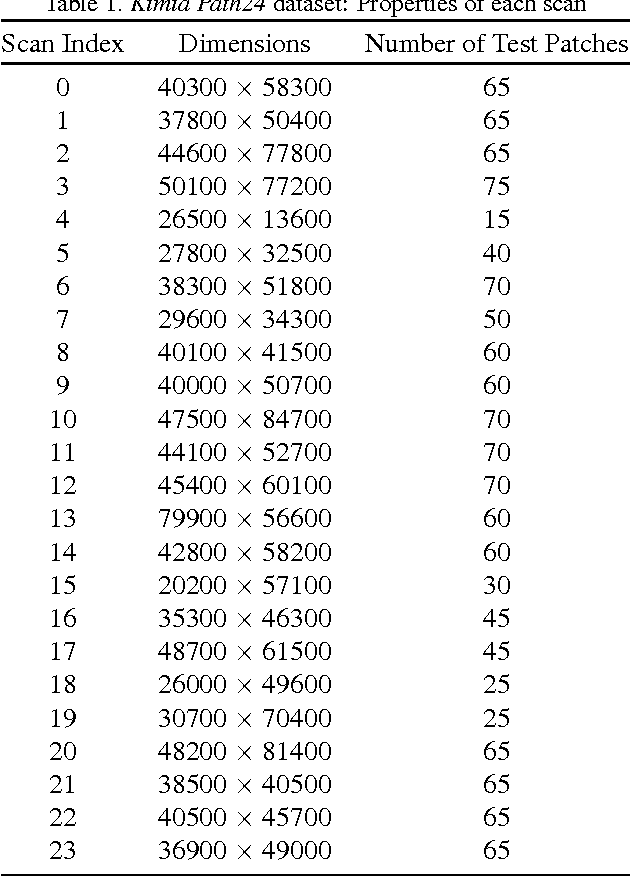

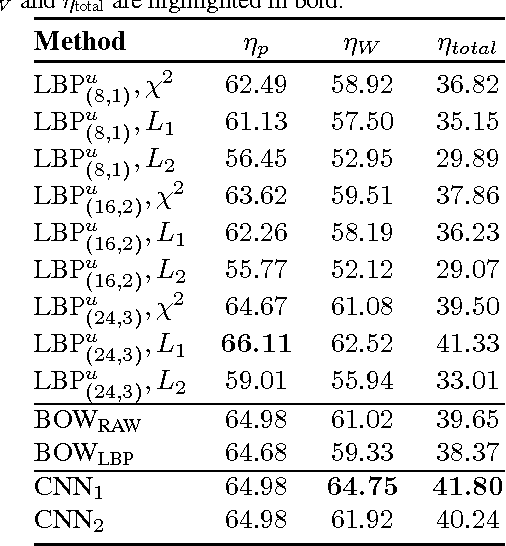
Abstract:In this paper, we introduce a new dataset, \textbf{Kimia Path24}, for image classification and retrieval in digital pathology. We use the whole scan images of 24 different tissue textures to generate 1,325 test patches of size 1000$\times$1000 (0.5mm$\times$0.5mm). Training data can be generated according to preferences of algorithm designer and can range from approximately 27,000 to over 50,000 patches if the preset parameters are adopted. We propose a compound patch-and-scan accuracy measurement that makes achieving high accuracies quite challenging. In addition, we set the benchmarking line by applying LBP, dictionary approach and convolutional neural nets (CNNs) and report their results. The highest accuracy was 41.80\% for CNN.
Learning Opposites Using Neural Networks
Sep 16, 2016


Abstract:Many research works have successfully extended algorithms such as evolutionary algorithms, reinforcement agents and neural networks using "opposition-based learning" (OBL). Two types of the "opposites" have been defined in the literature, namely \textit{type-I} and \textit{type-II}. The former are linear in nature and applicable to the variable space, hence easy to calculate. On the other hand, type-II opposites capture the "oppositeness" in the output space. In fact, type-I opposites are considered a special case of type-II opposites where inputs and outputs have a linear relationship. However, in many real-world problems, inputs and outputs do in fact exhibit a nonlinear relationship. Therefore, type-II opposites are expected to be better in capturing the sense of "opposition" in terms of the input-output relation. In the absence of any knowledge about the problem at hand, there seems to be no intuitive way to calculate the type-II opposites. In this paper, we introduce an approach to learn type-II opposites from the given inputs and their outputs using the artificial neural networks (ANNs). We first perform \emph{opposition mining} on the sample data, and then use the mined data to learn the relationship between input $x$ and its opposite $\breve{x}$. We have validated our algorithm using various benchmark functions to compare it against an evolving fuzzy inference approach that has been recently introduced. The results show the better performance of a neural approach to learn the opposites. This will create new possibilities for integrating oppositional schemes within existing algorithms promising a potential increase in convergence speed and/or accuracy.
 Add to Chrome
Add to Chrome Add to Firefox
Add to Firefox Add to Edge
Add to Edge